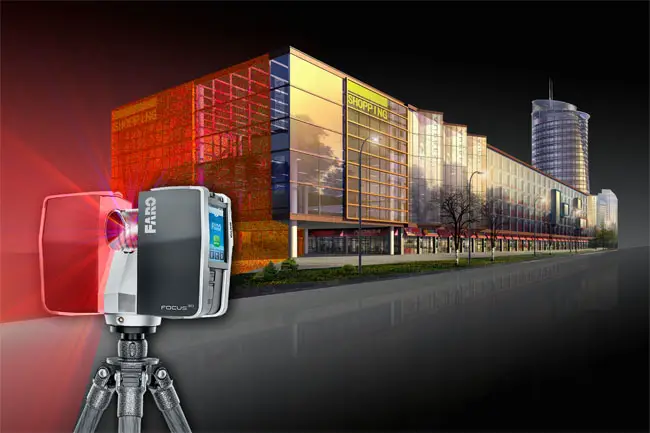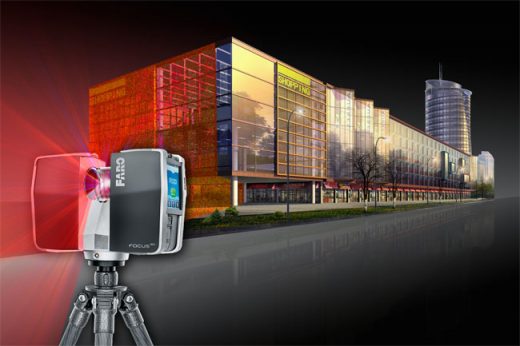Laser Survey, Point Cloud Modeling, Revit Design, As Built Structures, Construction
Laser Scanning for BIM
3D Models of Buildings – design for Revit and BIM
7 Dec 2014
Construction Laser Scanning
Virtual To Actual, Black Art Of Laser scanning for BIM – Over Hyped or Aptly Described?
When laser survey and point cloud modeling first arrived there was a sense of awe and wonder. As built structures were scanned and converted into 3D models so easily. Today as scanners and related software have become more advanced, and the BIM authoring tools have also evolved – 3D Laser scanning to accurate Revit and BIM is transforming the way building owners and designers gather the construction details and information about existing buildings and structures.
Eventually, Scan to BIM, has become the most popular and the talked about technology across the AEC industry. However, some skepticism and doubt still prevails across some sections of the industry. This skepticism is primarily because, point cloud surveys collect only what is visible, more over there can be inconsistencies in the
(Image Source: 1sthorizon.wordpress.com)
So the Question Here is to Scan or Not to Scan?:
There are several existing buildings that are old and need renovation however, due to lack of availability of proper documentation renovation becomes difficult. This is where laser scanning and point cloud modeling comes in. Suppose you collect the structural data for a building, consisting of shapes, mass and color, it becomes easy to plan MEP network within this structure such that there are no clashes between the structural and MEP disciplines.
This is where it is also possible to use Point cloud for clash detection and mitigation. However it is absolutely essential to consider some aspects of laser scanning before you decide to adopt the technology for virtual recreation of a As built facility.
Are these point cloud models ready to use? The survey data is made of thousands and millions of points and it needs to be traced upon and resurfaced to convert it into a model with polygons. Now it becomes ready for BIM.
It is absolutely true that point cloud survey can be costly. It requires a lot of on field work and the laser scanners that are used for laser survey are also costly. Another point that requires a mention here is that, the surveyed data (a considerably large building requires minimum 250 to 300 scans) can be large, and it requires lot of RAM and storage space to store and process the point clouds and convert them into intelligent information rich BIM.
As a result we can say that it is not for small scale projects, however for huge commercial, infrastructural and palatial properties in addition to heritage buildings and properties of architectural significance scan to BIM can be a valued proposition.
There is absolutely no doubt that using laser surveys, it becomes extremely easy and a fast tracked process to collect raw data. But there are some aspects to be mindful of. It is true that point cloud surveys cannot collect data in entirety. Apart from the fact that 3D scanners cannot capture details of hidden objects, it is also true that the accuracy and amount of detail collected does not solely depend on the type of scanner. The expertise of the survey professional also plays a major role.
Based on the cost benefit analysis it should be decided whether to scan or not to scan for a particular renovation, reconstruction, or refurbishment project.
The Point Cloud to BIM – Phenomenon And Evolution:
Laser scanners are getting smarter, compact and more accurate. The cost of scanning is hence coming down. If laser scanners become affordable even for developers who are working on very small scale projects, it will bring another revolution in the building and construction industry.
The use of laser survey will become common place, and even a small two storey building construction project will be able to leverage the benefits of point cloud to BIM for through documentation, clash detection, fast tracking the construction process and much more. The future of laser scanning and conversion to BIM will not be limited to documentation and renovation/retrofits/repair projects but will also be used during the construction projects to scan installed structures and check them against design models.
Laser Scanning for BIM image / information received 071214
Microsoft 70-483 Exam – Pass It with PrepAway
General overview
Programming has an important role in many things related to IT. Be it developing software, implementing security, or debugging, they all use programing one way or another. There’s structured programming and object-oriented one. When it comes to objected-oriented programming, C# is widely known by people who work in the field.
C# is a simple programming language that was developed by Microsoft. The company has the 70-483 exam to check your competence in it.
What is the Microsoft 70-483 exam?
The Prepaway 70-483 exam is one of the tests you need to face in the path towards the MCSA Web Applications certification. This exam is based on concepts in C# programming. The areas that you will be tested on are:
- Managing program flow (25-30%)
- Creation and usage of types (25-30%)
- Debugging applications and implementation of security (25-30%)
- Implementation of data access (25-30%)
It is a computer-based exam and contains about 50-60 multiple-choice questions. The 70-483 exam is also available in English, French, German, Portuguese, Chinese (Traditional or Simplified), and Japanese languages.
Preparing for your 70-483 exam
Microsoft offers various preparation methods like:
- Instructor-led training
It offers you two options: online or in a classroom. With the online option, you can get access to recorded lessons, training content, and gain lab experience for a period of 3 months. The live classroom course takes 5 days to complete. In that period, you will have a tutor who will take you through the course and prepare you in the most effective way to pass your exams.
- Exam prep video
You can find videos made by professionals in the field where they discuss various concepts related to C#.
- Self-paced training
Microsoft is very generous when it comes to helping students prepare for the tests. It even gives you free access to Microsoft tools and modules. People with various levels of expertise in this subject may try to pass this exam. With the self-paced option, you can work on developing your skills and gathering knowledge at a pace that you are comfortable with.
- Practice test
Practice tests are a great way to familiarize yourself with the exam structure/questions. You can use them to make mistakes and find your errors so that you can avoid making the same mistakes at the actual test.
- Community
There are some forums dedicated to the 70-483 exam. You can talk to people having different levels of competence and learn from their experiences. You can use these forums to share information, get doubts cleared, have useful discussions, and learn tips and tricks from the pros.
- Books
Microsoft offers some books that can aid you in understanding concepts in C# programming. One such book is Exam Ref 70-483 Programming in C#.
There are also some other resources that can help you prepare for the Microsoft exam. For example, YouTube videos, books, exam dumps, etc. If you just type the word C# in YouTube, you can find so many videos ranging from C# tutorial videos for beginners to videos for experts. This is suitable for people with different levels of expertise.
And talking about exam dumps, they are totally trending when it comes to preparing for IT certification tests. You can find many sites that offer training or practice papers. One such site is PrepAway. It is a great platform. PrepAway offers video courses, study guides, audio guides, and Q&As.
You need to be careful when using exam dumps because, unlike PrepAway, there are many sites that provide useless dumps that can be misleading and a waste of time and money.
How to become MCSA: Web Applications certified
I mentioned earlier that Microsoft 70-483 is an exam you have to pass in order to gain the MCSA: Web Applications certification. However, it is not enough to pass just that one exam. The 70-483 test is one option you can choose to face. To earn the certification, you actually have to cope with two exams: either the 70-480 or 70-483 exam, along with the 70-486 exam.
Benefits of earning the MCSA certification
Credentials are very beneficial to people looking for an advancement in their careers. This is because in order to gain a certificate you have to pass exams that will measure your competence in the subject. This means you can only pass if you have actually acquired the necessary skills and are competent enough to implement them. Here’s a list of benefits you can gain with an MSCA: Web Applications certification:
- Validates your skills
- Gives access to more job opportunities
- Makes you eligible for a higher pay
- Brushes up your existing skills
- Give you more abilities
- Updates your knowledge
Jobs you can get with the MCSA certification
As it was mentioned earlier, having MCSA: Web Applications gives you an access to more job opportunities. Here are a few of them:
- Java developer
- .net developer
- Web developer
- Software developer
- Stack developer
Conclusion
Getting MCSA: Web Applications and becoming a certified person has many perks. It gives you more knowledge and value. All you need to do in order to pass your exams and earn a certification is to learn and improve your knowledge in the subject areas, practice, and prepare for the tests, as well as implement what you learned.
BIM building information modelling
Location: UK
Architecture Designs
Design: Jun Sakaguchi architect

image from architect
iHabit Modular System
Architectural Concept Designs
Metropolitan Vertical Theme Park
Prefab House Book
Prefabricated Architecture Book
Comments / photos for the Laser Scanning for BIM page welcome





